Legal Aspects of Business: Analysis of Vicarious Liability for EIC Ltd
VerifiedAdded on 2022/12/26
|8
|866
|99
Presentation
AI Summary
This presentation analyzes the concept of vicarious liability within the context of a construction company, East India Construction Ltd (EIC Ltd). It addresses two specific scenarios: the company's potential liability for a truck driver's negligence leading to pedestrian injury and the liability stemming from a site manager's battery of a local resident. The presentation examines the legal principles of vicarious liability, assessing whether EIC Ltd can be held responsible for the actions of its employees. It then outlines proactive steps EIC Ltd could implement to mitigate future exposure to such claims, emphasizing the importance of taking sufficient care and ensuring compliance with relevant duties. The conclusion summarizes the findings, highlighting EIC Ltd's vicarious liability in both incidents and offering recommendations to reduce future incidents. The presentation is supported by references to legal resources.
1 out of 8
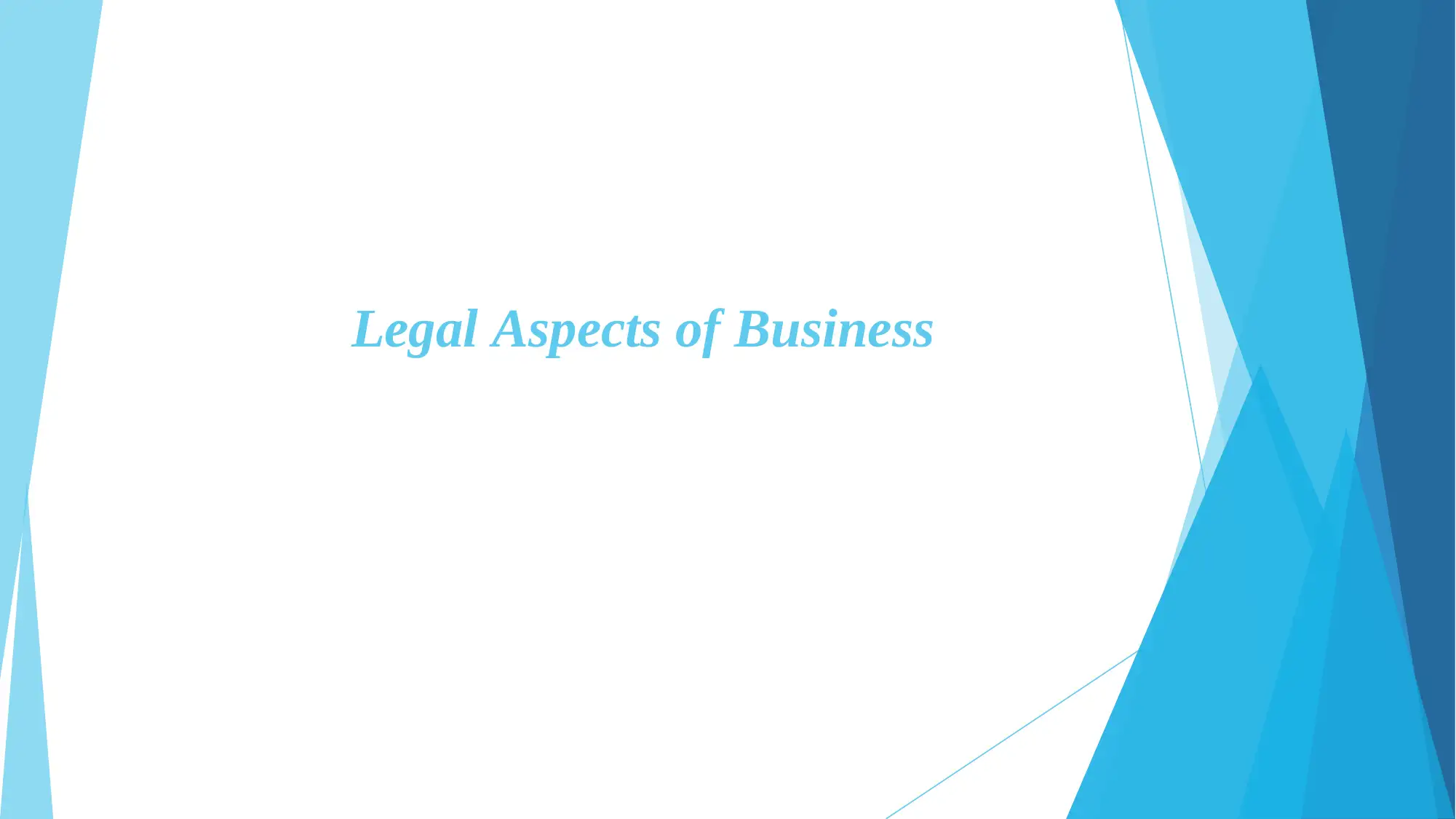
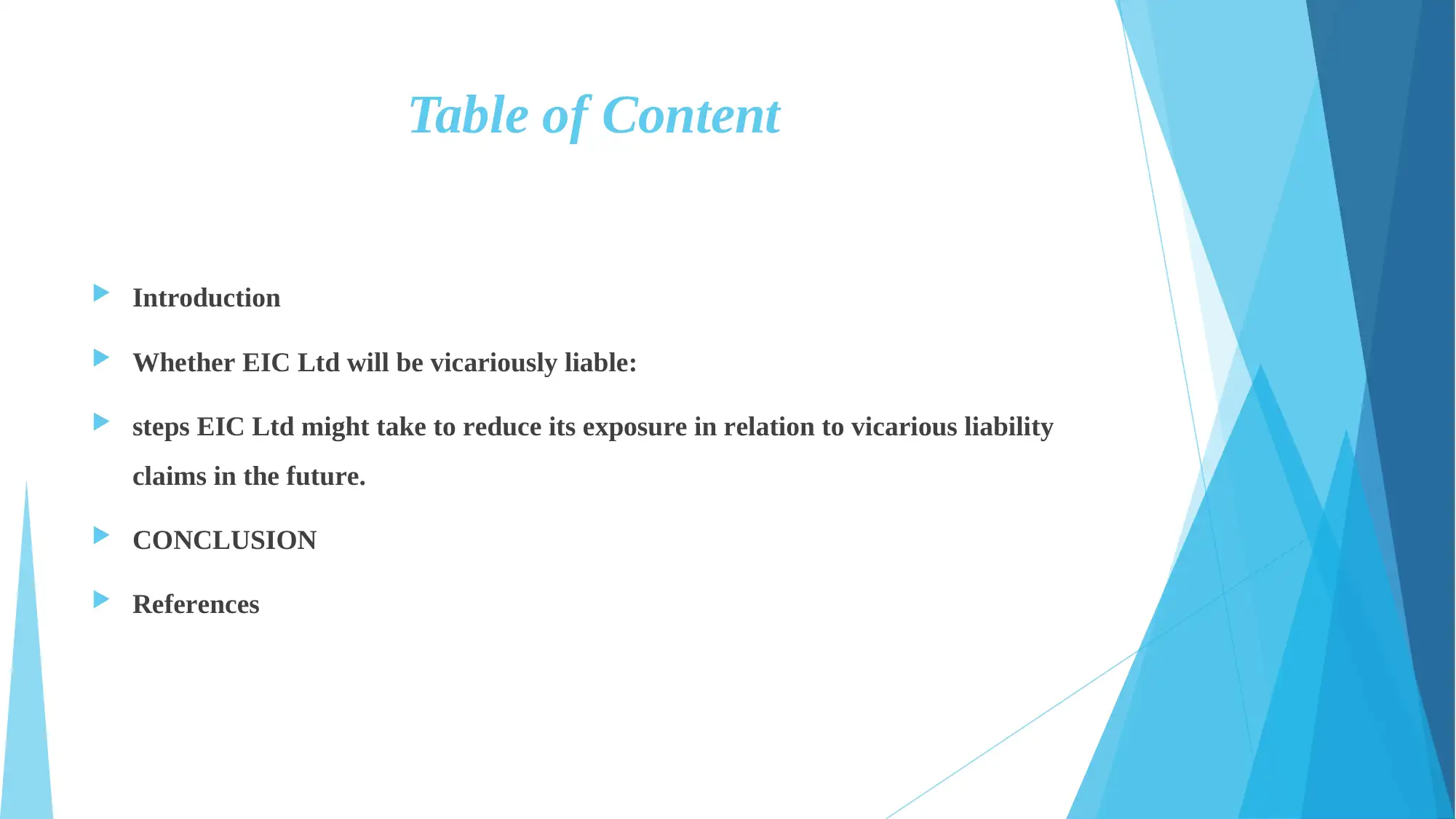
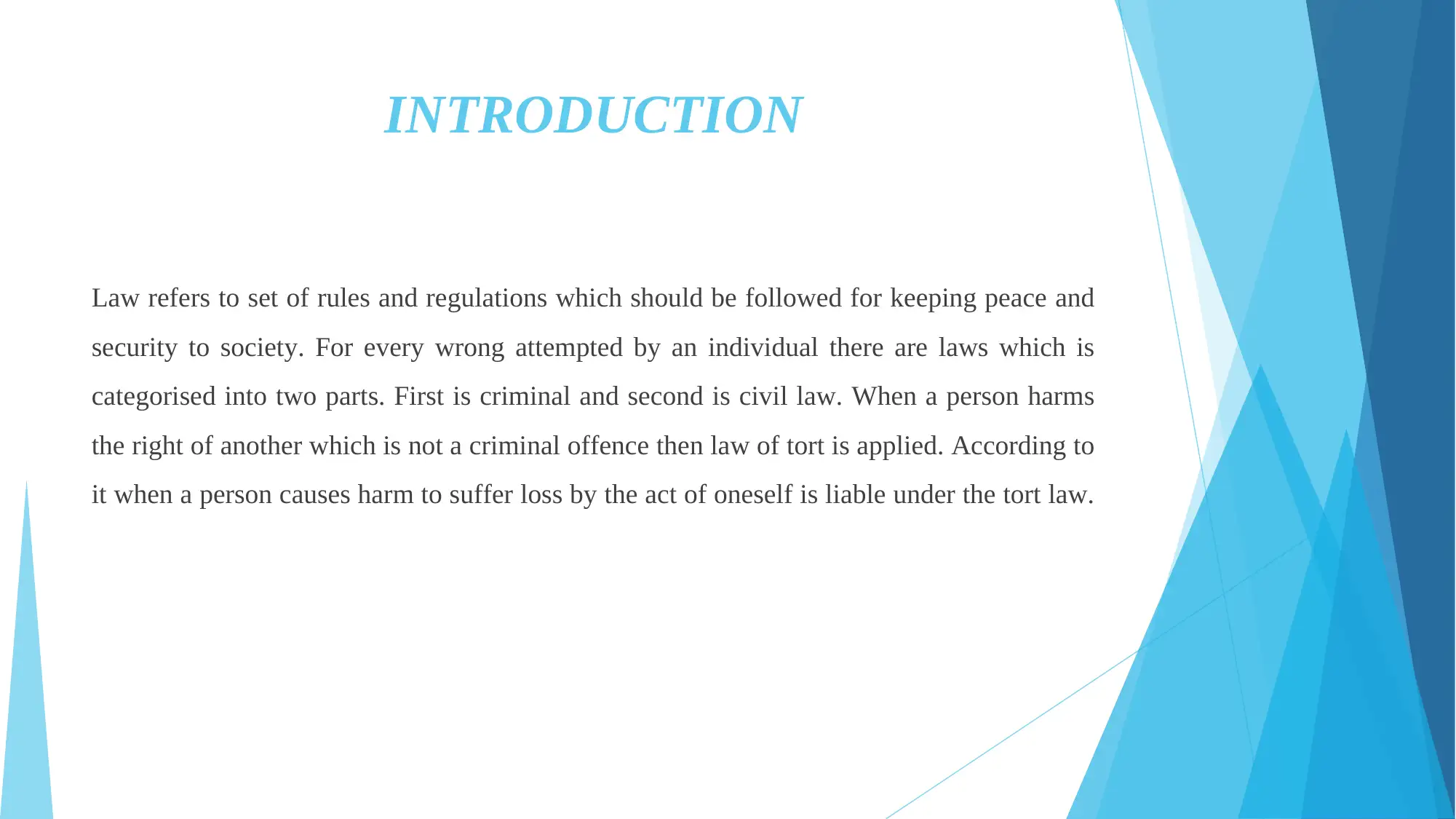

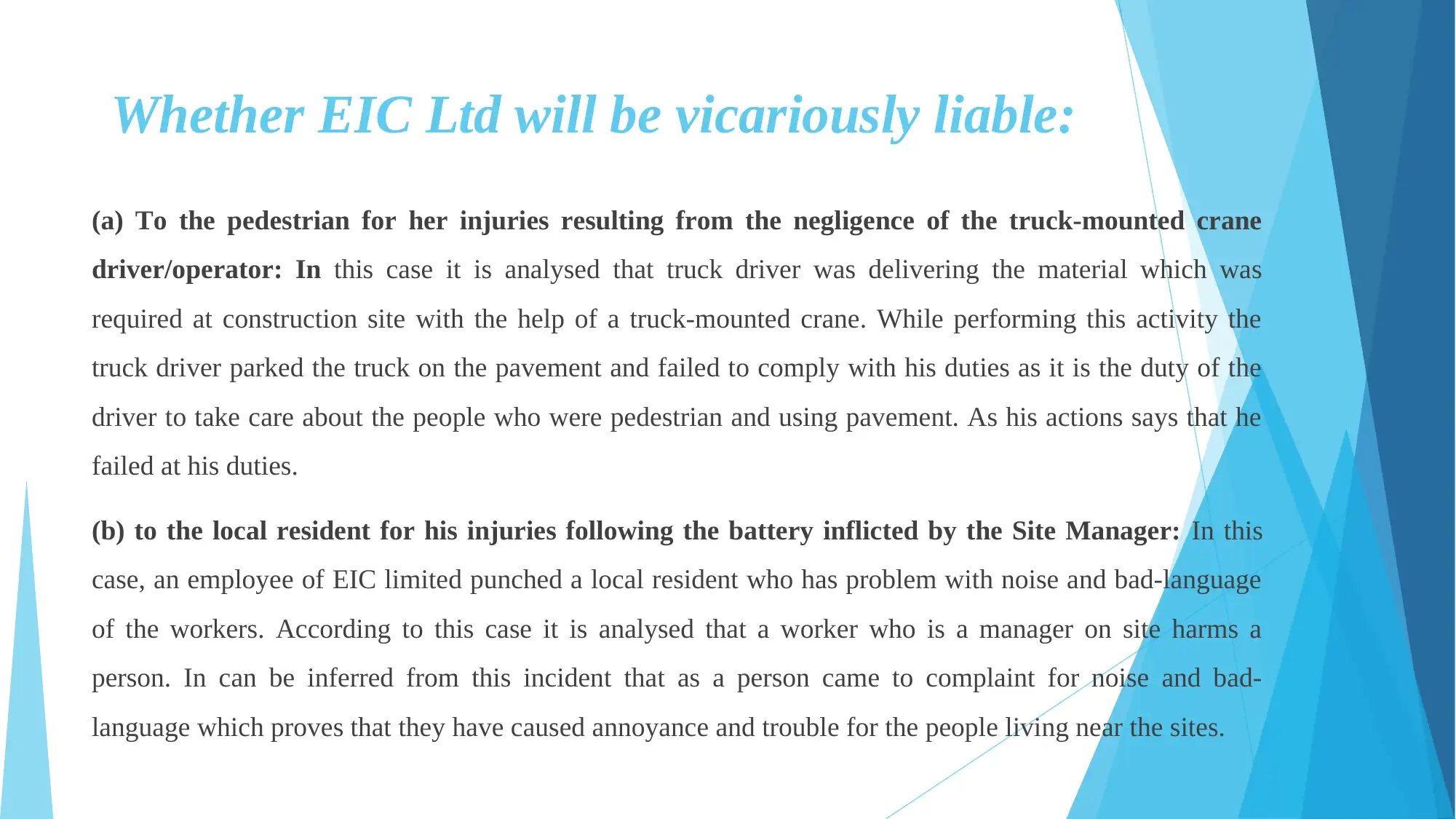
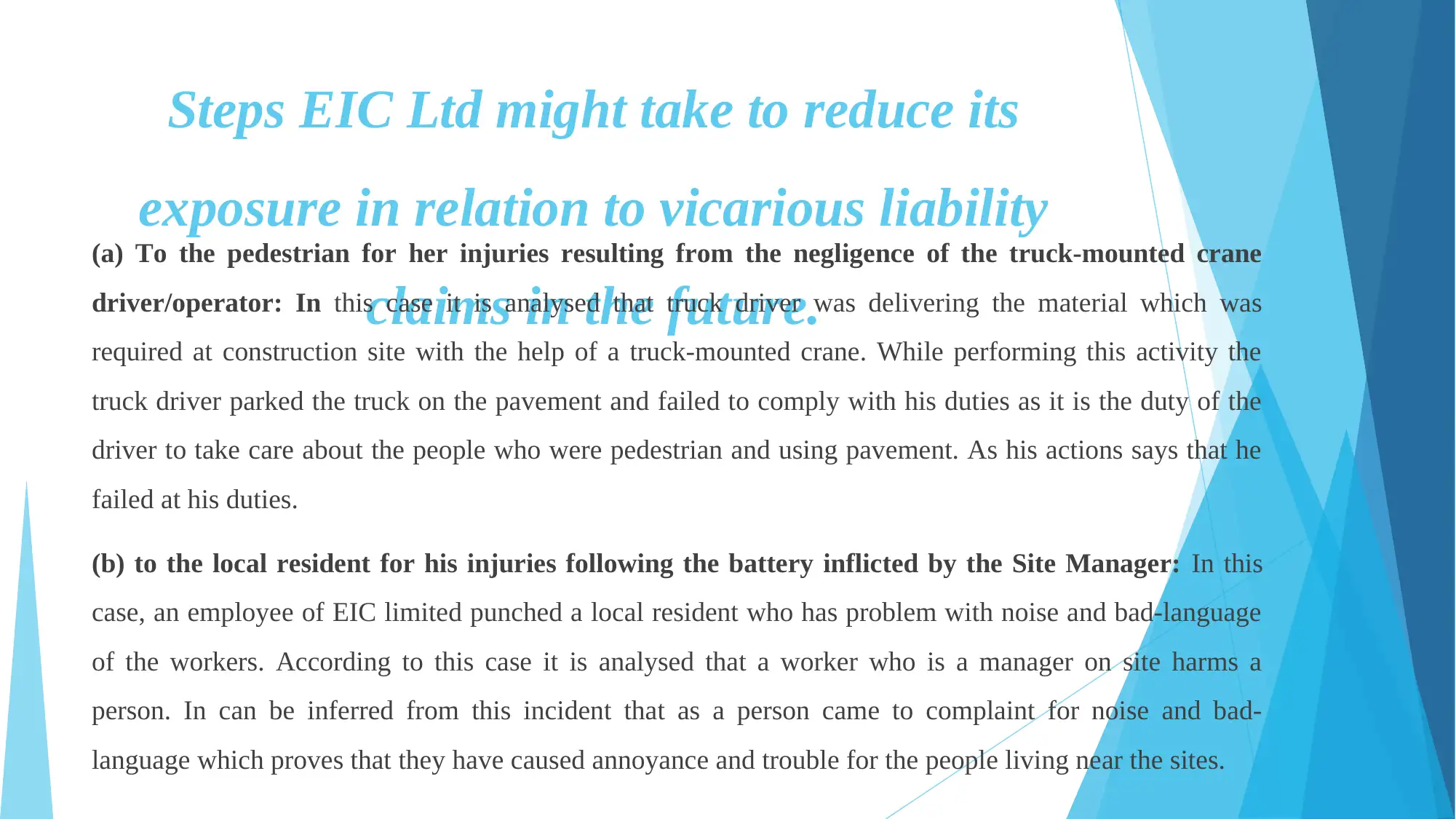
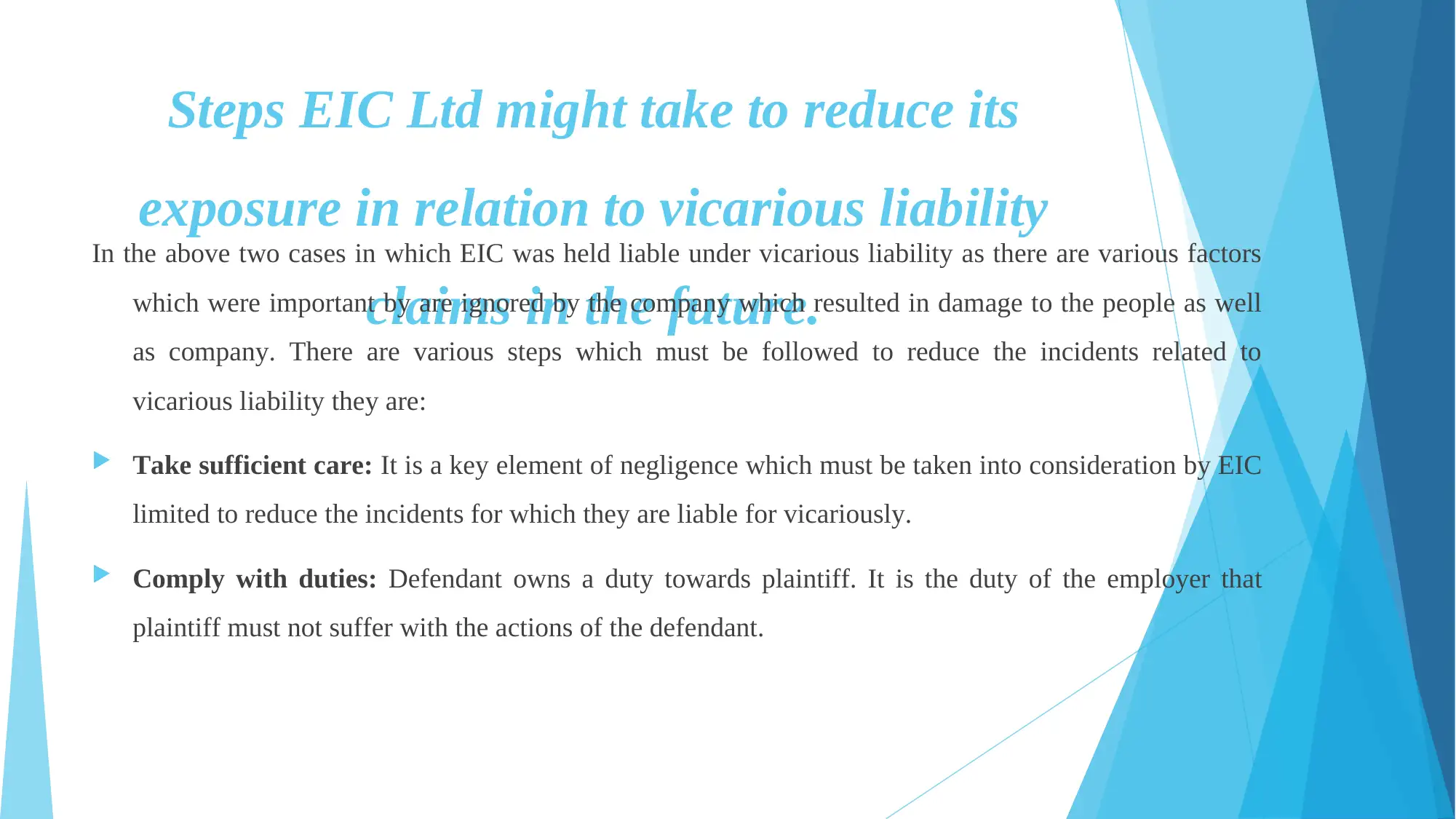
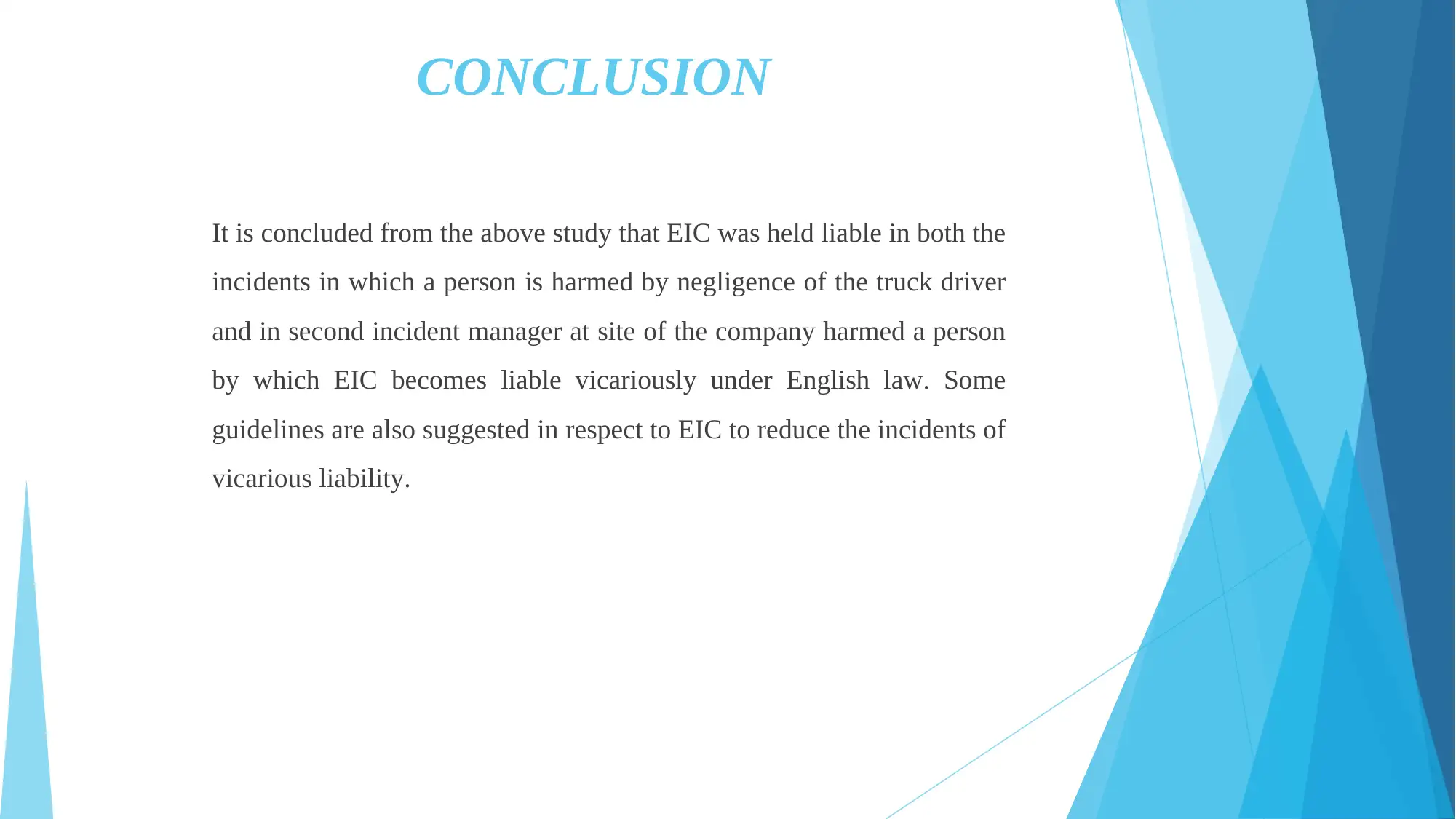
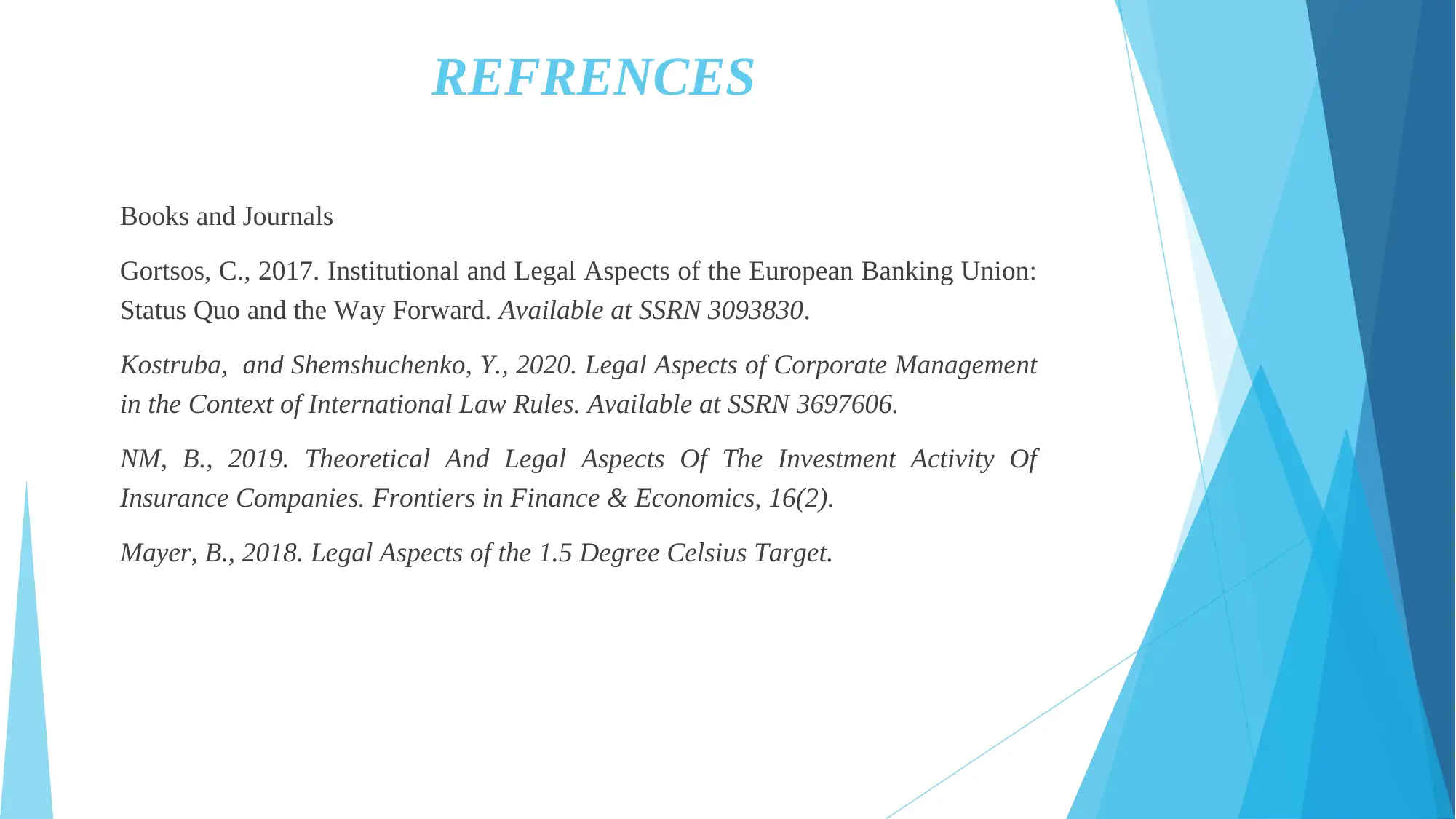






![[object Object]](/_next/static/media/star-bottom.7253800d.svg)